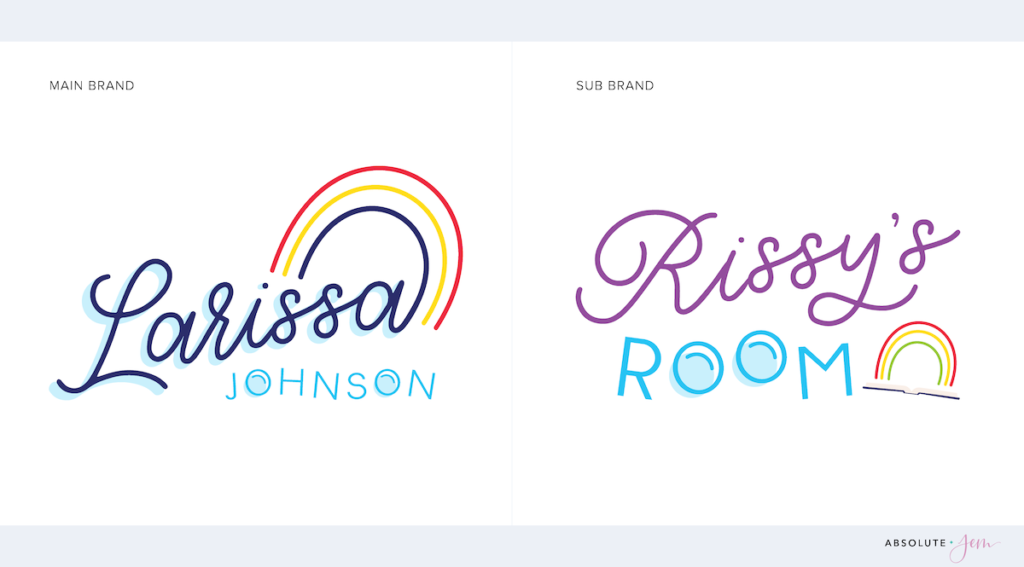Let's Talk Sub-Brands.
First off, what is a sub-brand? In the simplest of terms, it's a complementary brand created under an existing main brand. A brand within a brand, if you will. A brand spin-off.
It’s the Coke Zero to Coca-Cola. The Audible to Amazon. The Air Jordan to Nike.
This subsidiary / secondary brand falls under your main or "parent" brand and should reflect its current aesthetic vibe; however, sub-brands can have their own special style! They can be differentiated through a distinct name, logo, and a complementary-yet-standout visual identity.
The benefit of a sub-brand is that it is targeted to a specific audience, yet it gains instant credibility from the established presence and reputation of your main brand. Because it’s under your existing brand’s umbrella, a sub-brand allows your new product or service to be more easily recognized and trusted—while at the same time standing out and shining in its own right!

When should a small business create a sub-brand?
Sub-brands come in many forms when it comes to small businesses. For example, maybe you'd like to develop an online course. Or maybe you're opening up a digital shop. Or you'd like to start a membership site. Or a podcast!
If you're considering a sub-brand for your business, ask yourself the following:
- Is my new service or offering distinctive from that of my main brand, yet still in the same wheelhouse?
- Will the sub-brand appeal to a specific subset of my current audience, with the potential to attract new customers as well? Is there a demand?
- Would this new service or offering flourish from having its own distinct identity and marketing strategy, separate from that of my main brand?
- Will this sub-brand bolster my main brand by backing up or further legitimizing my existing services, offers, or expertise? (This is a mutually beneficial relationship!)
If you answered YES to these questions, a sub-brand is definitely something worth exploring!
What are the benefits of a sub-brand?
A sub-brand can appeal to a targeted segment of your existing audience, but it also has the potential to attract new customers. Plus, sub-brands are a great way to diversify your revenue streams, expand upon your offerings, and level up your business and brand as a whole.
How should you “brand” a sub-brand?
For a sub-brand’s visual identity, I always use the main brand's color palette and overall aesthetic as the starting point. We want the two brands to be related, yet still be distinct from each other. Kinda like eyebrows: Sisters, not twins!
You don’t want to confuse your audience by creating a completely opposite or clashing visual identity for your sub-brand. Your followers recognize your business as having a certain look and feel—so maintaining that overall vibe is critical to ensuring they still feel like they “know and trust” your sub-brand.
Take the logos below as an example. I worked with Larissa Johnson to create her main logo in the first image, and we built off this general idea to create a complementary sub-brand logo for Rissy’s Room.

Rissy's Room is a sub-brand with its own name and logo, but clearly belongs to the "Larissa Johnson" brand family. We used the same fonts, switched up the color palette just a smidge, and played upon the same graphic treatments used in her main visual identity.
The result is a similar-yet-different spin on the main branding. Still recognizable to her existing audience, yet a new name and concept unique enough to stand on its own.
The nice thing about sub-brands is that you don't need to reinvent the wheel when it comes to the visual branding! You just need to expand upon it or even reimagine it. No need to build up a brand from scratch, because you already have the visual foundation.